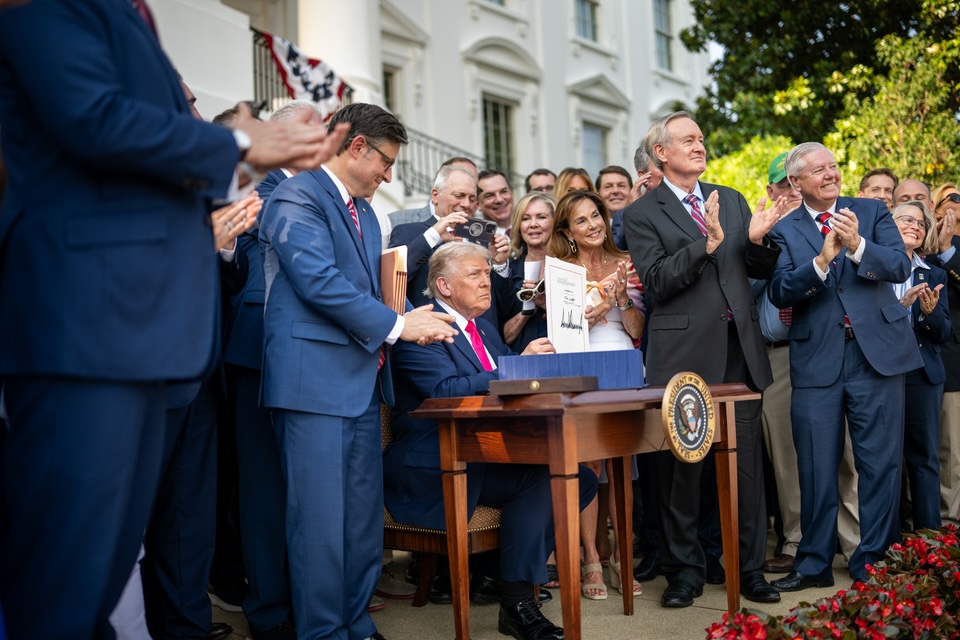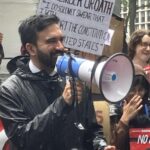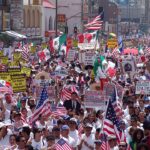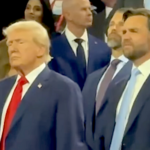Peter Solenberger
Posted July 28, 2025

Donald Trump signed his One Big Beautiful Bill Act (OBBBA) on July 4, the day after Congress narrowly adopted it. The July 1 Senate vote was 51 to 50, with Vice President JD Vance casting the tie-breaking vote. The July 3 House vote to concur was 218 to 214.
The votes were mostly along party lines, with all Democrats voting “no,” most Republicans voting “yes,” and a handful of Republicans joining the Democrats to vote “no” — from the left because they thought the cuts were too severe and from the right because they thought the budget deficit was too big.
OBBBA is a tax and spending plan to rob from the poor and give to the rich. It extends the tax cuts enacted by the first Trump administration in 2017, which mainly benefited corporations and the rich and were due to expire next year. It increases spending on the military and border enforcement. And it reduces spending on Medicaid, SNAP food assistance, and other programs benefiting poor and working people; on public health, science, research, and education; on the environment; and on non-military foreign aid.
OBBBA is likely to be the only major piece of legislation of the second Trump administration, as the 2017 budget was the only major piece of legislation of the first Trump administration. Trump doesn’t have the votes in Congress to get more, and the Republicans are likely to lose their majorities in the House and possibly the Senate in the midterm elections next year.
Lacking a stable congressional majority, Trump is creating havoc mainly through executive orders. But OBBBA is worth examining closely, since it shows both the continuity of ruling-class thinking and Trump’s cruel innovations. It shows the signal without the noise of Trump’s social media rants.
The federal budget before OBBBA
The 2024 federal budget was the last budget of the Joe Biden administration. It reflects the longterm priorities of the US ruling class. The nonpartisan Congressional Budget Office (CBO) created a useful but misleading online tool called The Federal Budget in Fiscal Year 2024: An Infographic. The following table shows its main categories.
Federal Budget FY 2024
| Category | Outlay | % of GDP |
|---|---|---|
| Mandatory | ||
| Social Security | $1.5 trillion | 5.0% |
| Medicare | $865 billion | 3.0% |
| Medicaid | $618 billion | 2.1% |
| Income security | $370 billion | 1.3% |
| Other mandatory | $752 billion | 2.6% |
| Total mandatory | $4.1 trillion | 14.1% |
| Discretionary | ||
| Non-defense | $960 billion | 3.3% |
| Defense | $850 billion | 2.9% |
| Total discretionary | $1.8 trillion | 6.3% |
| Interest | $881 billion | 3.1% |
| Total outlays | $6.8 trillion | 23.4% |
For readers not familiar with the US federal budget, mandatory spending means payments for benefit programs whose eligibility rules and benefit formulas are set by law. Appropriations for such programs are automatic (mandatory) until the law changes. Discretionary spending means spending for which lawmakers make specific appropriations.
Social Security is the main public retirement system. Medicare is the main public health insurance system for retirees. Medicaid is the main means-tested public health insurance system. Income security includes unemployment compensation, disability income, child and family support, and food assistance. “Other mandatory spending” is mainly federal civilian and military retirement and veteran’s benefits.
Non-defense discretionary spending includes some veterans’ benefits, transportation, education, some categories of income security, public health, police and courts, international affairs, natural resources and the environment, regional development, science and technology, space, agriculture, energy, and administration.
Defense spending includes operations, maintenance, personnel, procurement, and research and development.
Interest means interest on the national debt minus interest the government receives.
Digging more deeply
The defense category is obviously misleading. The US has no enemies from which it needs to defend itself. The category means the costs of maintaining the US empire — the costs of militarism and war.
The costs are greatly understated in the budget. As a November 2023 article by Gisela Cernadas and John Bellamy Foster explains, “actual U.S. military expenditures include seven further categories: veterans’ benefits, veterans’ life insurance, other veterans’ costs, military medical insurance, the military portions of space spending, grants in aid to other governments, and the share of net interest attributed to actual federal military expenditures.” See Actual U.S. Military Spending Reached US$ 1.537 Trillion in 2022—More than Twice Acknowledged Level (US$ 765.8 billion) for details.
Social Security and Medicare are not part of the budgeting process and weren’t included in budget figures until 1968, when Lyndon Johnson added them to obscure the cost of the Vietnam War. They are transfer payments. Payroll taxes on those who are working provide income and healthcare for those who are retired. Similar transfer programs exist for federal civilian and military employees.
The $881 billion spent annually on interest on the national debt is sacred to the bankers, since much of it goes to them.
The $1 trillion spent annually on Medicaid and income security — the social safety net — is the cost to the capitalists of avoiding the economic disruption and social unrest that would come if millions of workers lacked food, shelter, and medical care. Most working-class families experience times of unemployment, loss of employer-provided health insurance, illness, disability, debt, and economic hardship. Many experience lifetimes of poverty.
The capitalists use the safety net to divide the working class. Demagogic politicians tell people who are working that their taxes are supporting undeserving people who don’t want to work. This is a lie, since most social welfare recipients are children, working parents, ill, disabled, or elderly. The benefits are so meager that no one chooses to live on them, if they have a choice.
But the lie supports the careers of many politicians, and not just Republicans. The Democrats shifted from Johnson’s “War on Poverty” during the postwar boom to Bill Clinton’s “Personal Responsibility and Work Opportunity Reconciliation Act of 1996,” which fulfilled his campaign promise to “end welfare as we know it.”
After all these expenditures, only about $700 billion remains for the federal government’s contribution to financing transportation, education, public health, international food and medical programs, natural resources and the environment, regional development, science and technology, space, agriculture, energy, and administration. This and the safety net are OBBBA’s main targets.
Budget effects of OBBBA
The CBO prepared a detailed report called Estimated Budgetary Effects of an Amendment in the Nature of a Substitute to H.R. 1, the One Big Beautiful Bill Act, Relative to CBO’s January 2025 Baseline. Alicia Parlapiano, Margot Sanger-Katz, Aatish Bhatia and Josh Katz of the New York Times analyzed the report in an article A List of Nearly Everything in the G.O.P. Bill, and How Much It Would Cost or Save. The following chart is derived from their analysis.
10-year budget changes ($ trillion)
| -1.25 | 0+5 | |
| Tax cut extensions | ||
| Other tax provisions | ||
| Temporary tax cuts | ||
| Defense | ||
| Border/immigration | ||
| Other increases | ||
| Natural resources | ||
| Other healthcare | ||
| Food benefits | ||
| Student loans | ||
| Green energy/environment | ||
| Medicaid |
OBBBA’s biggest cost by far is the extensions of the 2017 tax cuts. Taken together with new tax cuts, the cost of OBBBA tax cuts is $5 trillion over 10 years.
The extensions are no change from the Biden budget, since the cuts existed throughout the Biden administration, and it made no move to reverse them.
Nor is the increase in military spending of $150 billion over 10 years a change. Military spending is a bipartisan commitment. The Democrats regularly increase it.
Trump’s spending innovation is the additional $130 billion over 10 years for border enforcement, that is, for terrorizing immigrants.
The OBBBA tax cuts will lead to a big increase in the federal deficit. OBBBA offsets this mainly by reducing spending on Medicaid. In his 2024 presidential campaign, Trump promised not to touch the program. His cuts may come back to bite him, as millions of his supporters rely on Medicaid.
OBBBA also cuts spending on green energy, the environment, student loans, food assistance, and public health. Trump argues that such matters should be left to the states or to the markets. That, too, may come back to bite him.
Human costs
OBBBA robs from the poor and gives to the rich. A CBO report, How H.R. 1, the One Big Beautiful Bill Act, Would Affect the Distribution of Resources Available to Households, found the following:
Average annual change in household resources (2026–2034)
| Income decile | -5% | 0+5 |
|---|---|---|
| Highest | ||
| 9th | ||
| 8th | ||
| 7th | ||
| 6th | ||
| 5th | ||
| 4th | ||
| 3rd | ||
| 2nd | ||
| Lowest |
As in 2017, Trump demagogically includes tax cuts for the upper levels of the working class. They’re not nearly as big as the cuts for the top 12% or 1%, but they’re big enough to persuade sections of the working class to go along with benefit cuts for the poor.
Unless they’re reversed by struggle, the human effects of the cuts will be severe. The CBO estimates that OBBBA will cause about 8.6 million people to be cut from Medicaid. It estimates that another 5 million will lose health insurance from the expiration of the expanded subsidies for Obamacare adopted during the pandemic, and from other policy changes left in place by the Democrats.
Fourteen million people losing health insurance is bad, but the international repercussions are even worse. OBBBA reduces international food and medical aid and confirms the elimination of the US Agency for International Development (USAID).
A July 2 news release from the University of California at Los Angeles (UCLA) reports: “A study co-authored by a UCLA Fielding School of Public Health researcher finds that recent cuts to the United States Agency for International Development, or USAID, may lead to more than 14 million additional deaths globally by 2030, including more than 4.5 million children under 5.”
Capitalism and Trumpism
OBBBA mostly expresses the same ruling-class priorities as the budgets of previous administrations, including Biden’s: military spending, police and prisons, infrastructure and government services the capitalists need, interest payments on the national debt, and the minimum necessary social provision beyond that to reproduce the working class and keep it in line.
These priorities have helped the capitalists shift income and wealth upward for 45 years, to take nearly all the gains of rising labor productivity for themselves. In Marxist terms, to raise the rate of exploitation. They have helped to divide the working class through competition, turning white against Black and Brown, native-born against immigrants, men against women, straights against LGBTQ+.
Trump’s innovations with OBBBA are 1) to increase spending for border enforcement, and 2) to reduce spending on Medicaid, green energy, the environment, student loans, food assistance, and public health. Compared to military spending, the amounts are relatively small, but they will hurt vulnerable people immediately and the entire working class — indeed, the entire world working class — over time.
This, on top of the chronic depredations of capitalism: tens of millions of workers in the US and hundreds of millions around the world unemployed, underemployed, underpaid, overworked, disrespected, oppressed on the basis of race, nationality, immigration status, or gender, denied democratic rights, devastated by famine, drought, wars, ethnic cleansing, and genocide. All of which will get worse as the imperialist confrontation escalates and the climate crisis intensifies.
Resistance and rebellion
Resistance is back to the level it was during the first Trump administration. Resistance began in 2017 with the Women’s March, the airport rallies against Trump’s Muslim ban, the Dakota Access Pipeline protests, the March for Science, and the People’s Climate March, and continued through the Black Lives Matter protests of 2020.
The November 2020 elections pretty much ended the protests, as the Democratic Party and the leaders of the unions and movement organizations opposed disruptions that might hurt the party‘s election campaign and then the Biden administration. “Leave politics to us,” the party, union, and movement leaders said.
Failure to confront the Biden administration allowed the capitalists to continue their depredations, demoralized the Democratic base, energized the Republican base, and led to the narrow Republican victory in the 2024 elections. Biden proved to be a roundabout way back to Trump.
Trump is weak. His policies are unpopular. His base is fracturing. The working class could easily halt the attacks on undocumented immigrants and other vulnerable populations. It could begin to reverse the damage done under Democratic and Republican administrations back to Jimmy Carter and Ronald Reagan.
In December 2005, the Republican-led House of Representatives adopted the “Border Protection, Anti terrorism, and Illegal Immigration Control Act of 2005,” which would have criminalized assistance to undocumented immigrants. Since most Latinx people have undocumented family and friends, the legislation would have criminalized tens of millions of people.
Protests erupted, most spectacularly the May 1 Great American Strike. Millions of Latinx workers — backed by their communities, allied with unions with Latinx members, and with broad public support — flooded the streets of Los Angeles, Chicago, Dallas, and other cities. Many businesses chose to close or were forced to close for lack of workers. Latinx drivers brought the ports of Los Angeles and Long Beach to a halt by refusing to haul cargo to or from them.
The Republicans abandoned the legislation. George W. Bush had been riding high in 2004. The immigration showdown — the high point of a revival of struggle — shattered his agenda and made him a lame-duck president. Barack Obama won the next presidential election. See How the Biggest General Strike in American History Revived the US Working Class on May Day by Paul Ortiz for an account.
Returning to today, summer is the season for farming, construction, and vacationing in most of the US. Immigrants, including undocumented immigrants, work in those industries. A Great American Strike lasting a week would shatter the Trump agenda.
The US working class tolerates Trump mainly because workers see no alternative. Obama failed to deliver on his promise of “change you can believe in.” Biden campaigned lamely on not being Trump. When Kamala Harris tried to repeat that, six million Democrats stayed home, and she lost.
Revolutionary Marxists see the alternative — mass demonstrations, strikes, occupations, collective self-defense, a working-class political party, and on from there. But we lack the numbers and influence to make that happen.
Our sometimes frustrating, sometimes inspiring task is to join with other activists to build the existing struggles, help organize, expand, and escalate them, and patiently explain the need for more.






Leave a Reply